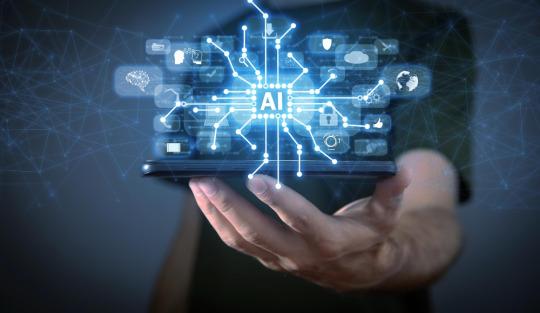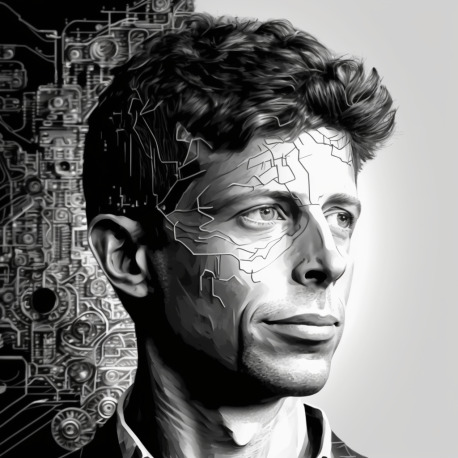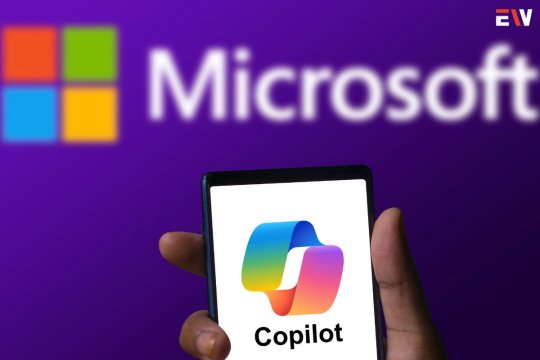#EthicalAI
Text
Demystifying AI Art: A Guide to Engineering Effective Prompts
In today’s digital era, the boundaries between technology and creativity continue to blur, giving rise to a fascinating realm known as AI art. AI art, short for Artificial Intelligence art, represents a groundbreaking fusion of computational power and artistic expression. It encompasses a diverse range of artworks generated or enhanced through the use of artificial intelligence algorithms,…

View On WordPress
#ai art#ai art prompts#ai creativity#ai generator#ai image#AlgorithmicArt#art inspiration#creative technology#Deep Learning#Digital Creativity#EthicalAI#Machine Learning#neural style transfer#prompt engineering
2 notes
·
View notes
Text
The Imperative Significance of ChatGPT Learning in Today's World
In the rapidly evolving landscape of technology, the significance of ChatGPT learning has become increasingly paramount. As artificial intelligence continues to advance, ChatGPT, a cutting-edge language model developed by OpenAI, stands out as a beacon of innovation. This blog explores the pivotal role of ChatGPT learning in today's world, highlighting its transformative impact on communication, problem-solving, and knowledge dissemination.
Communication is the lifeblood of human interaction, and ChatGPT is at the forefront of revolutionizing this fundamental aspect of society. With its ability to understand and generate human-like text, ChatGPT facilitates seamless and natural conversations. This is particularly crucial in an era where global connectivity is more important than ever. Whether it's bridging language barriers or enhancing accessibility for differently-abled individuals, ChatGPT's learning capabilities make communication more inclusive and efficient.
In the complex tapestry of the modern world, problem-solving has become an intricate dance of data and decision-making. ChatGPT's learning prowess empowers it to tackle a myriad of issues by sifting through vast amounts of information and providing relevant insights. From assisting professionals in diverse fields to aiding students in their academic endeavors, ChatGPT's problem-solving capabilities are reshaping how challenges are approached and resolved.
The democratization of knowledge has been a longstanding goal, and ChatGPT is a powerful tool in achieving this objective. By continuously learning from diverse sources, it becomes a repository of information spanning various domains. This wealth of knowledge is then readily accessible to users, breaking down barriers to education and enabling individuals to learn about topics of interest or necessity. In a world hungry for information, ChatGPT's learning abilities contribute to a more informed and educated global populace.
Creativity and innovation thrive in environments where ideas flow freely. ChatGPT's learning capabilities contribute to this atmosphere by generating creative content and assisting users in ideation processes. It serves as a collaborator, sparking new concepts and perspectives that may not have been readily apparent. In fields such as content creation, design, and product development, ChatGPT's ability to stimulate creative thinking is a valuable asset.
While the potential of ChatGPT learning is vast, it comes with its set of challenges and ethical considerations. Issues such as bias in training data, privacy concerns, and the responsible use of AI must be addressed to ensure that the benefits of ChatGPT are realized without compromising societal values.
In conclusion, the imperative significance of ChatGPT learning in today's world cannot be overstated. Its impact on communication, problem-solving, knowledge dissemination, and creativity is reshaping the way we interact with technology and each other. As we navigate the evolving landscape of artificial intelligence, harnessing the potential of ChatGPT's learning capabilities is not just a choice but a necessity for building a more connected, informed, and innovative global community.
#ChatGPT#ArtificialIntelligence#TechnologyInnovation#CommunicationRevolution#ProblemSolving#KnowledgeDemocratization#CreativityInAI#EthicalAI#FutureTech#GlobalConnectivity
2 notes
·
View notes
Text
Barbie AI Selfie Generator Tutorial
youtube
#techwonders#beyondimaginationai#futuretechmagic#aiapplications#mindblowntech#innovativeai#ai#productivity#aitools#efficiency#timemanagement#personalassistant#techexaminer#techexaminerintelligence#techexamineraivshumans#humanintelligence#aivshuman#futureofai#ethicalai#Youtube
2 notes
·
View notes
Text

The Rise of Artificial Intelligence 🤖💡
Discover how AI is shaping society, ethics, and advancements in our latest blog post! Dive deep into the fascinating impact of this cutting-edge technology and join the conversation.
🌍 Dive into the ethical considerations surrounding AI. Learn how we can ensure fairness, transparency, and accountability in algorithmic decision-making systems. Join us in shaping an AI-powered future that benefits all.
#ArtificialIntelligence#AI#TechRevolution#EthicsAndAI#Advancements#FlukesysGlobalBlog#FutureTech#AIforGood#TransformingSociety#TechInnovation#EthicalAI#TransparencyMatters#AlgorithmicFairness#AIAdvancements#Innovation#Empowerment#AIResponsibility#FlukesysGlobal
2 notes
·
View notes
Text
AI's Social Impact: Transforming Industries and Empowering Society

Artificial Intelligence (AI) is reshaping our society and impacting various aspects of our lives. Here's an overview of AI's social impact:
1. Accessibility:
AI technologies are enhancing accessibility for individuals with disabilities. Natural language processing enables voice-controlled devices, aiding those with mobility impairments. Computer vision assists visually impaired individuals through object recognition and navigation systems.
2. Education:
AI is revolutionizing education by providing personalized learning experiences. Adaptive learning platforms use AI algorithms to tailor educational content and pacing to individual students' needs, promoting effective and engaging learning.
3. Employment and Workforce:
AI automation is transforming the job landscape, with both opportunities and challenges. While certain jobs may be automated, new job roles will emerge, requiring individuals to adapt and acquire new skills. AI can also augment human capabilities, enhancing productivity and efficiency.
4. Ethical Considerations:
AI raises ethical concerns that need to be addressed. These include issues of algorithmic bias, transparency, accountability, and privacy. Ensuring fairness and avoiding discrimination in AI systems is crucial for creating an inclusive and equitable society.
5. Healthcare:
AI has the potential to revolutionize healthcare by improving diagnostics, treatment planning, and patient care. AI-powered systems can assist in early disease detection, personalized treatment recommendations, and remote patient monitoring, leading to better health outcomes.
6. Social Services:
AI can optimize social services by analyzing vast amounts of data to identify trends and patterns, helping governments and organizations make informed decisions. AI can enhance the efficiency and effectiveness of public services such as transportation, energy management, and emergency response systems.
7. Environmental Impact:
AI plays a role in addressing environmental challenges. It helps optimize energy consumption, supports climate modeling and prediction, and aids in the development of sustainable practices across industries.
8. Safety and Security:
AI contributes to safety and security through advancements in surveillance systems, fraud detection, and cybersecurity. AI algorithms can analyze data in real-time, detect anomalies, and identify potential risks, enhancing overall safety measures.
While AI brings numerous benefits, it also requires responsible and ethical development and deployment. Collaboration among policymakers, industry leaders, and society as a whole is crucial to harness AI's potential for positive social impact while addressing challenges and ensuring the well-being and empowerment of individuals and communities.
#aisocialimpact#AIinSociety#TechEthics#ethicalai#airesponsibility#AIandSocialChange#socialinnovation#technologyimpact#aiandhumanity#socialtransformation#aiindailylife#aiandsociety#techtrendsin2023#aitrends
3 notes
·
View notes
Text

OpenAI CEO Sam Altman Calls for Nuanced Approach to AI Safety Amidst Research Halt Debate
In a recent blog post, we discussed OpenAI CEO Sam Altman's response to an open letter from the Future of Life Institute signed by tech leaders like Tesla CEO Elon Musk and Apple co-founder Steve Wozniak, calling for a six-month AI research halt. While Altman agreed with certain aspects of the letter, he argued that it lacked technical nuance about where the pause was necessary.
During an MIT event on business and AI, Altman emphasized the importance of caution and rigor in addressing safety issues but felt that the letter wasn't the optimal approach. The open letter had gained significant attention, with over 25,000 signatures, urging AI labs and independent experts to develop and implement shared safety protocols for advanced AI systems.
OpenAI, the creator of the widely-discussed AI bot ChatGPT, has garnered international attention and prompted a surge in AI investment. Its GPT technology is used in Microsoft's Bing AI chatbot, and Google has launched its competitor, Bard. Altman acknowledged that as AI capabilities become more powerful, the safety bar must be raised.
Concerns about safe and ethical AI use have reached the White House and various international forums, reflecting the growing importance of the topic. Despite not currently developing GPT-5, OpenAI is enhancing GPT-4's capabilities and addressing safety implications. Altman's remarks serve as a reminder that it is crucial to focus on the capabilities of AI systems and how they might evolve over time, rather than getting caught up in version numbers.
Altman's insights emphasize the need for a more nuanced approach to AI safety and the importance of addressing the capabilities of current systems like GPT-4. As the debate around AI safety continues, it's crucial for the industry to prioritize developing shared safety protocols and ethical guidelines for AI design and development.
In the ongoing conversation about the potential risks associated with AI systems, Sam Altman, CEO and co-founder of OpenAI, clarified that they are not presently developing GPT-5, the expected successor to their AI language model GPT-4, which debuted in March.
During an MIT event, Altman responded to a widely shared open letter urging AI labs, including OpenAI, to halt progress on AI systems more potent than GPT-4. Though the letter highlighted safety concerns, it faced criticism from numerous industry insiders, even some who signed it. The AI community remains uncertain about the true nature of AI risks and how development can be paused effectively.
At the event, Altman noted that the letter lacked technical insight on where to pause development and pointed out that a previous version inaccurately claimed OpenAI was working on GPT-5. He clarified, "We are not and won't for some time," dismissing the assumption as "sort of silly."
Despite not working on GPT-5, Altman emphasized that OpenAI is enhancing GPT-4's capabilities while carefully considering the safety implications. "We are doing other things on top of GPT-4 that I think have all sorts of safety issues that are important to address and were totally left out of the letter," he said.
The AI safety debate's fixation on version numbers, like GPT-5, can overshadow more pressing concerns: the capabilities of these systems. It's vital to scrutinize what these systems can and cannot achieve and how this might change over time.
Altman's assurance that OpenAI isn't developing GPT-5 may not comfort those worried about AI safety. The company continues to expand GPT-4's potential (e.g., by connecting it to the internet) while other industry players develop similarly ambitious tools. OpenAI will also likely optimize GPT-4 further, possibly releasing intermediate versions like GPT-4.5.
Sam Altman's insights provide an essential reminder that the focus should be on capabilities rather than version numbers. His pragmatic approach highlights the importance of addressing safety concerns with current systems like GPT-4, rather than fixating on hypothetical future iterations like GPT-5.
Ultimately, even if a global ban on new AI developments were possible, society still faces significant challenges in understanding and managing the effects of currently available systems. GPT-5 may not be in the pipeline, but the world has much to uncover about GPT-4 and its potential consequences.
ChatGPT 4 and ChatGPT 3.5 are both advanced AI language models developed by OpenAI, but there are several key differences in their features and capabilities.
One of the main differences between ChatGPT 4 and ChatGPT 3.5 is the size of their training data sets. ChatGPT 4 has been trained on a much larger dataset than its predecessor, allowing it to generate more accurate and contextually relevant responses. This larger dataset also means that ChatGPT 4 has a greater understanding of natural language and can respond to a wider range of inputs.
In addition to its larger dataset, ChatGPT 4 also includes several new features that were not present in ChatGPT 3.5. One notable feature is the ability to perform multi-turn conversations, where the AI can remember previous interactions and use that information to generate more accurate and personalized responses. ChatGPT 4 also includes an improved understanding of context and the ability to generate more diverse and creative responses.
Another difference between ChatGPT 4 and ChatGPT 3.5 is their computational requirements. Due to its larger dataset and more complex architecture, ChatGPT 4 requires significantly more computational power than ChatGPT 3.5. This means that ChatGPT 4 may not be as accessible to smaller organizations or individuals who do not have access to powerful computing resources.
Overall, while ChatGPT 4 and ChatGPT 3.5 share many similarities, the improvements made to ChatGPT 4's architecture and features have resulted in a more powerful and versatile language model.
As an AI language model, ChatGPT is constantly evolving and improving with each new iteration. While there is no official announcement about the development of ChatGPT 5, it is possible to speculate about some potential features and improvements that it could include. One possibility is that ChatGPT 5 could be even larger than its predecessors, with an even larger dataset and more complex architecture. This would allow for even more accurate and contextually relevant responses. Additionally, ChatGPT 5 could potentially include new features such as the ability to generate more visually descriptive responses or even produce multi-modal responses that incorporate text, images, and other media. Another possibility is that ChatGPT 5 could include new capabilities related to natural language understanding, such as a better understanding of idioms, slang, and other nuances of language. Ultimately, the exact features of ChatGPT 5 will depend on the specific research and development goals of the team at OpenAI, but it is likely to continue pushing the boundaries of what is possible with AI language models.
About Mark Matos
Mark Matos Blog
2 notes
·
View notes
Text
youtube
#ArtificialIntelligence#AIrisks#TechEthics#FutureTech#EthicalAI#DigitalFuture#AIresponsibility#TechDebate#TechDiscussion#DigitalEthics#UnveilingAI#ThreatsToOurFuture#AIimpact#EmergingTech#EthicalInnovation#youtube#small youtuber#online business#entrepreneur#bookkeeping#accounting#marketing#ecommerce#branding#digitalmarketing#Youtube
0 notes
Text
AI with Ethics and Engagement
AI doesn't have to be a nightmare of algorithms. With MAIAi, we're ensuring it's a dream come true, working tirelessly for productivity with purpose. Own your dreams, not your dreads. 💡🤖 #MAIAi #BCERT.io #IDO #EthicalAI
Visit: BlockCerts.com
Gold Utility Token: Token.blockcerts.com
Black Decentralized AI Token: https://bcert.io/ido
Download the BlockCertsAI Wallet and Mobile APPs: https://blockcerts.com/apps-download
Learn more about BCERT Tokens’ value and AI’s power by reading our latest posts and insights.
Authored by the BlockCertsAI team, in collaboration with MAIAi. https://blockcerts.com/blog/
0 notes
Text
Justin Hegyi Scale AI: An Ultimate Guide for Success
Justin Hegyi Scale AI the newest bright spot in the AI sky is causing waves in the technology industry. If you’re interested in understanding the impact of top-quality AI such as Scale AI on industries, this article will benefit you navigate the way. We’ll look at the way that Justin Hegyi has guided his ship towards AI advancement in Scale AI, delving deep into the history of AI, its recent applications as well as the immense potential it has.

In an age where data is supreme, AI-driven technologies are the stalwarts advancing to take on the new frontier. From healthcare to transportation and from entertainment to finance There’s no field that is left unaffected by the powerful impact of artificial intelligence. The top of companies that are unique such as Scale AI stands Justin Hegyi who is a name that’s synonymous with cutting-edge technology as well as the visionary leadership.
The blog here is a lengthy tribute to the rising popularity of Justin Hegyi and Scale AI, meticulously crafted for entrepreneurs, AI enthusiasts, tech startups, and anyone who wants to know more about the AI field. In this thorough guide, we’ll go over all you must learn about Justin Hegyi’s Scale AI, from its creation to the impact it’s making today.
Who is Justin Hegyi Scale AI?
Justin Hegyi is an eminent person within his AI and technology fields recognized for his expertise in the complex areas of data science as well as machine learning. The renown scientist has made a significant contribution to the development of AI-based solutions and his role in the field of Scale AI has been nothing short of groundbreaking.
Education in some of the most prestigious institutions and possessing an interest in technology, Hegyi’s education has served as the foundation upon which his illustrious job has flourished. His visionary approach has played a key role in bringing about the technological innovation that is now the characteristic for Scale AI.
In the Beginning There was Justin Hegyi Scale AI
In its essence Justin Hegyi Scale AI is a technology-driven business that is situated in the middle between AI as well as machine-learning. Its DNA is formed from the essence of data. The goal is at help in providing the fuel needed to power intelligent systems. From educating algorithms for autonomous vehicles, to increasing the capabilities of AI software across various industries the Justin Hegyi scale AI’s technology has an extensive and significant impact.
Under the guidance of Justin Hegyi Scale, AI has been able to grow from a promising startup to a prominent name in the AI business. The technology that it provides can be non-biased and can benefit a variety of industries harness the potential of AI to improve efficiency, boost services, and extend the limits of what is possible.
An Overview of Justin Hegyi Scale AI’s Technology
Scale AI’s technology holds the potential to revolutionize the operations that depend on AI specifically, by way of data labeling. Data is the mainstay of AI systems which is why Scale AI ensures that this vital component is of the best quality, with precise labeling.
0 notes
Text
The Rise of AI and Its Impact on Remote Work Opportunities
Hey I’m Inzamul, Welcome to my article today I am going to breakdown The Rise of AI and Its Impact on Remote Work Opportunities
In recent years, the rapid advancement of artificial intelligence (AI) has transformed various aspects of our lives. From self-driving cars to personalized recommendations on streaming platforms, AI is becoming increasingly integrated into our daily routines. One area where AI is making a significant impact is in the realm of remote work opportunities. Let’s explore how AI is shaping the future of work-from-home arrangements.
Want to fire your boss? Take control of your Online income & get Started Today.
AI: Automating the Mundane
One of AI's primary impacts on remote work is automation.This shift will require remote workers to adapt and develop new skillsets to remain competitive.
Want to fire your boss? Take control of your Online income & get Started Today.
AI: Boosting Remote Team Communication
Bridging geographical divides can be a challenge for remote teams. AI-powered communication tools are stepping up to address this. These tools offer features like:
AI: Revolutionizing Remote Hiring
Finding the perfect remote talent can be a challenge. AI is streamlining the process through:
The Future of Remote Work: A Human-AI Partnership
Want to fire your boss? Take control of your Online income & get Started Today.
The rise of AI doesn't signal the end of remote work; it signifies its evolution. The future of remote work lies in collaboration between humans and AI. Here's what to expect:
Conclusion
AI is not a replacement for remote workers; it's a powerful tool that can enhance productivity, communication, and efficiency. By embracing AI and developing the necessary skillsets, remote workers can thrive in the new era of work.
Thanks for read my article, The Rise of AI and Its Impact on Remote Work Opportunities
The Rise of AI and Its Impact on Remote Work Opportunities
Affiliate Disclaimer :
Some of the links in this article may be affiliate links, which means I receive a small commission at NO ADDITIONAL cost to you if you decide to purchase something. While we receive affiliate compensation for reviews / promotions on this article, we always offer honest opinions, users experiences and real views related to the product or service itself. Our goal is to help readers make the best purchasing decisions, however, the testimonies and opinions expressed are ours only. As always you should do your own thoughts to verify any claims, results and stats before making any kind of purchase. Clicking links or purchasing products recommended in this article may generate income for this product from affiliate commissions and you should assume we are compensated for any purchases you make. We review products and services you might find interesting. If you purchase them, we might get a share of the commission from the sale from our partners. This does not drive our decision as to whether or not a product is featured or recommended.
#AIatWork#RemoteProductivity#FutureOfWork#AIWorkforce#VirtualAssistants#WorkFromAnywhere#AIInnovation#RemoteHiring#EthicalAI#SmartWork#DigitalTransformation#RemoteOnboarding#AIProductivity#WorkLifeBalance#AIWorkplace#RemoteCollaboration#AIInsights#FlexibleWork#AIImpact#RemoteSuccess
0 notes
Text
How Xcelore's comprehensive Enterprise AI capabilities can revolutionize your business?

At Xcelore, we specialize in delivering end-to-end AI management solutions that empower organizations to leverage AI effectively and ethically. Here’s how we can help transform your business:
Data Integration: Seamlessly integrate data from disparate sources to create a unified, comprehensive dataset for AI modeling.
Model Development: Develop cutting-edge AI models tailored to your specific business objectives and industry requirements.
Deployment & Monitoring: Deploy AI models into production environments and continuously monitor performance for optimal results.
Explainability & Transparency: Ensure AI models are interpretable and transparent, building trust and compliance with regulatory standards.
Continuous Improvement: Implement feedback loops and iterative processes to refine AI models and enhance accuracy over time.
#XceloreAI#AIManagement#EnterpriseAI#AIInnovation#DataIntegration#ModelDeployment#AIethics#BusinessTransformation#AIforBusiness#ArtificialIntelligence#AIExperts#DataScience#DigitalTransformation#InnovationLeaders#EthicalAI
0 notes
Text
Coding using AI on Codiumate Agent platform
Introduction
CodiumAI’s Codiumate Agent AI is an advanced artificial intelligence designed to assist users in coding-related tasks. It operates within an IDE, providing real-time support, error detection, and code optimization suggestions. The agent leverages deep learning algorithms to understand and generate code, making it an invaluable tool for developers looking to enhance productivity and…

View On WordPress
#AIAdoption#AIAnalytics#AIandSociety#AIApplications#AIChallenges#AIEducation#AIEmpowerment#AIEntertainment#AIExpertise#AIExploration#AIforGood#AIHealthcare#AIIndustry#AIInnovation#AIInsights#AIInspiration#AIJourney#AIProgress#AIUnleashed#AlImpact#ArtificialIntelligence#Automation#CuttingEdgeAI#DataScience#DigitalTransformation#EmergingTech#EthicalAI#FutureOfWork#FutureTech#HumanMachineCollaboration
0 notes
Text

5 Tips for Effective AI Prompt Engineering - MagnusMinds
🚀Unlock the potential of AI with these essential prompt engineering principles.🔝 Craft clarity, context, diversity, creativity, and ethics for impactful results.💥
#AIPromptEngineering#AIdevelopment#EthicalAI#Innovation#DataDiversity#CreativePrompts#TechEthics#AIEngineering#ClarityInDesign#ContextualAI#AI#PromptEngineering#NextLevel#LifeAtMagnusMinds#MagnusMinds#aiprompt#aiart#ai#aiartwork#dalle#digitalart#art#aiartists#starryai#aiartcommunity#aiartgallery#aiartworks#aiarts#writerscommunity#midjourney
0 notes
Text
https://www.client-growth-solutions.com/wp-admin/post.php?post=660&action=edit
🌟 The Rise of AI: A Glimpse into the Future 🌟
#AI#ArtificialIntelligence#FutureTech#TechTrends#Innovation#ExponentialGrowth#EthicalAI#TechRevolution#TheFutureIsNow#EmbraceTheUnknown
0 notes
Text
ETHICS
Expanded Article Plan: Understanding AI Ethics: Balancing Innovation with Responsibility

Navigating the Ethical Terrain of Artificial Intelligence
In the rapidly evolving landscape of technology, Artificial Intelligence (AI) has emerged as a beacon of innovation, transforming how we live, work, and interact with the world around us. From revolutionizing healthcare through predictive analytics to reshaping customer service with intelligent chatbots, AI’s potential seems boundless. However, as we tread further into this brave new world, the ethical implications of AI technologies demand our urgent attention. The concept of AI ethics is no longer a peripheral concern but a foundational aspect of responsible AI development. In this article, we embark on a journey to understand the delicate balance between harnessing AI’s transformative power and upholding our ethical responsibilities to society. By delving into ethical AI frameworks, exploring the importance of AI transparency, and advocating for AI accountability, we aim to illuminate the path towards a future where AI not only drives innovation but also embodies our shared values and principles.
The Rise of AI: Opportunities and Challenges
Seizing Opportunities through AI Innovation
The ascent of AI has opened a Pandora’s box of opportunities, each with the potential to redefine industries and enhance human capabilities. In healthcare, AI algorithms predict patient outcomes, enabling personalized treatment plans. In the realm of environmental conservation, AI assists in monitoring endangered species and managing natural resources more efficiently. The business sector benefits from AI through optimized operations, targeted marketing, and enhanced customer experiences. These examples barely scratch the surface of AI’s ability to address complex challenges and streamline processes, signaling a future brimming with possibilities.
Navigating Ethical Challenges and Dilemmas
However, the rapid adoption of AI technologies is not without its ethical challenges. As AI systems increasingly make decisions previously under human jurisdiction, concerns about AI transparency and accountability come to the forefront. Questions arise about the fairness of AI algorithms, the bias in data sets, and the potential for AI to perpetuate or even exacerbate societal inequalities. Furthermore, the deployment of AI in sensitive areas such as surveillance and autonomous weaponry raises alarms about privacy infringement and moral responsibility. These challenges highlight the pressing need for ethical AI frameworks that guide responsible AI development, ensuring that technological advancements do not come at the expense of ethical considerations or human rights.
The journey of AI, from its inception to its current state of rapid development, underscores a crucial dichotomy: the vast opportunities presented by AI are closely intertwined with significant ethical challenges. As we continue to explore AI’s potential, the focus must shift towards embedding ethical considerations into the fabric of AI development. By prioritizing transparency, accountability, and fairness, we can navigate the complexities of AI ethics and steer technological innovation towards a future that respects and enhances human dignity and societal welfare.
#AIEthics#ResponsibleAI#InnovationWithResponsibility#EthicalAI#AIForGood#SustainableTech#TechEthics#DigitalResponsibility#AIRegulation#FutureOfAI#TechForHumanity#EthicalInnovation#TransparencyInAI#AIAndSociety#DataPrivacy
0 notes
Text
Microsoft’s Copilot AI Faces Criticism for Generating Inappropriate and Harmful Images

Microsoft Engineer Raises Concerns
Late-night testing by Shane Jones, a Microsoft artificial intelligence engineer, has unveiled disturbing images generated by Microsoft’s copilot Designer, the AI image generator powered by OpenAI’s technology. Jones, who actively red-teams the product, found content that contradicts Microsoft’s responsible AI principles, including demons, monsters, and explicit scenes involving sensitive topics like abortion rights, underage drinking, and drug use.
Internal Reports Ignored
Jones, alarmed by his findings, began reporting his concerns internally in December. Despite acknowledgment from Microsoft, the company chose not to withdraw the product from the market. Jones, feeling compelled to address the issue publicly, penned an open letter on LinkedIn, urging OpenAI to investigate. Microsoft’s legal department requested the removal of his post, prompting him to escalate the matter to U.S. senators and later to the Federal Trade Commission.
Calls for Action
In his recent letters to the Federal Trade Commission Chair Lina Khan and Microsoft’s board of directors, Jones demands a halt to Microsoft’s Copilot Designer’s public use until improved safeguards are in place. He advocates for product disclosures and a change in Google’s Android app rating, emphasizing the potential risks associated with the AI model.
Public Outcry Amidst Industry Concerns
Jones joins a growing debate surrounding generative AI, which has seen a surge in deepfake creation and concerns about misinformation, especially with crucial upcoming elections globally. Despite over 1,000 daily product feedback messages received by Microsoft’s copilot team, Jones asserts that the team’s response is limited to addressing the most severe issues, leaving many potential risks unexplored.
Controversial Content and Copyright Concerns
Microsoft’s Copilot Designer, available under an “E for Everyone” app rating, continues to generate images deemed inappropriate and harmful. Jones highlights concerns about political bias, religious stereotypes, and conspiracy theories. Additionally, copyright violations arise as Copilot generates images featuring Disney characters, potentially breaching both legal and Microsoft policy boundaries.
Addressing the Crisis
Microsoft, in response to the concerns raised, emphasizes its commitment to addressing employee concerns and enhancing technology safety. However, Jones asserts the lack of efficient reporting channels for employees in case of widespread dissemination of harmful images. As debates on generative AI’s impact intensify, the industry faces challenges in establishing robust safeguards and guardrails to protect against misuse.
The controversy surrounding Microsoft’s Copilot Designer underscores the pressing need for comprehensive AI model oversight, with potential implications for the broader deployment of generative AI in various industries.
Also Read: Microsoft Introduces Copilot Key on Windows Keyboards for AI Conversations
#Microsoft#CopilotAI#AIEthics#responsibletourism#generativeai#deepfake#missinformation#AIrisks#artificialintelligence#EthicalAI#techcontroversy
0 notes